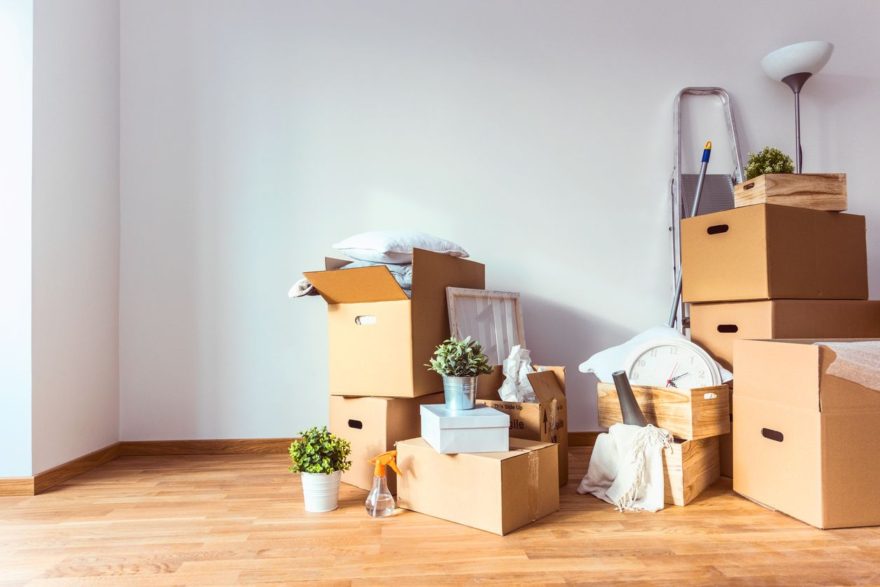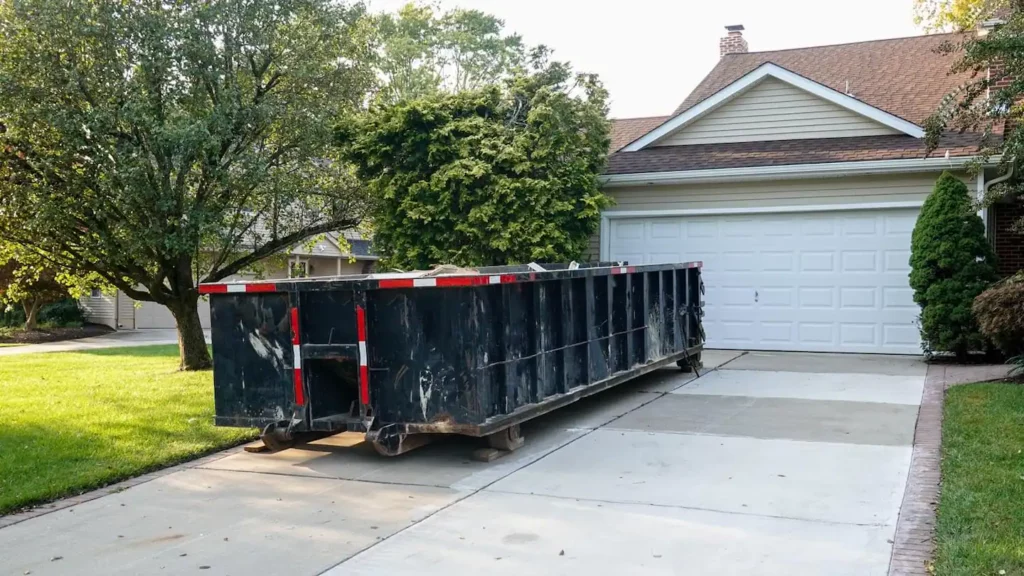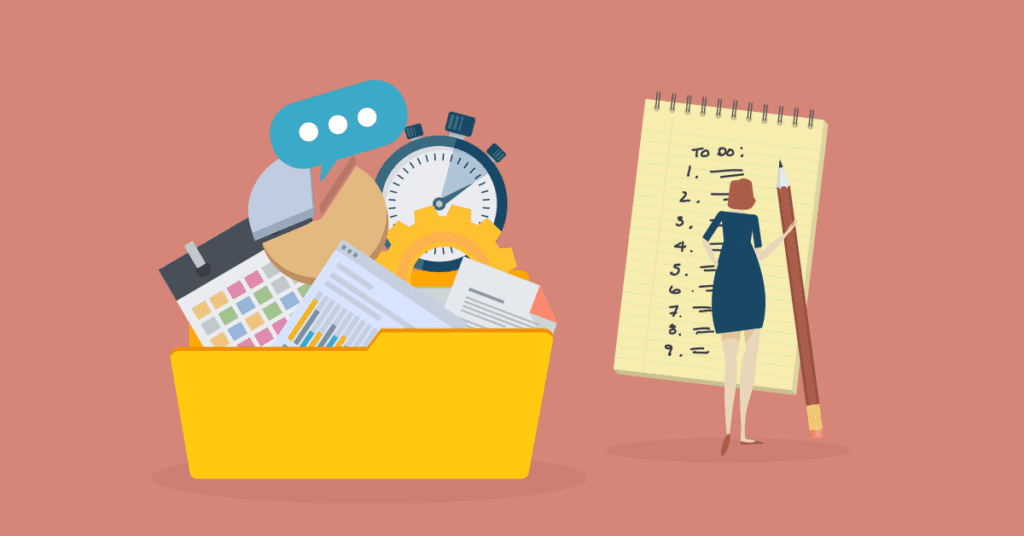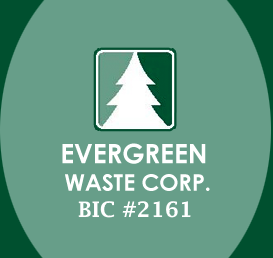Introduction
So, you’re wondering how to clean out a house full of junk? We’ve all been there. Over the years, we accumulate a lot of items, some of which hold sentimental value, while others simply pile up, turning our homes into cluttered spaces. In this guide, we’ll delve deep into the art of decluttering, offering you expert advice and actionable steps to transform your cluttered room into an organized space.
The prevalence of cluttered homes and the challenges they present.
Many households struggle with the accumulation of items, turning spaces into dumping grounds for seasonal decorations, extra home decor, and miscellaneous items. The challenge isn’t just the physical clutter; it’s the emotional weight of deciding what to do with sentimental items and the overwhelming feeling that decluttering is just too big a task.
The transformational benefits of decluttering.
Decluttering your home isn’t just about junk removal; it’s about creating an organized space where you can relax and enjoy your surroundings. By cleaning out a house full of junk, you save money, reduce stress, and even improve your mental well-being. Plus, with a house full of organized items, you’ll find it easier to stay organized in the future.
1. Setting Clear Goals for Decluttering

The importance of having a clear vision before starting.
Before you embark on the journey of how to clean out a house full of junk, it’s crucial to have a clear vision. Why? Because decluttering isn’t just about junk removal; it’s about creating an organized space that reflects your ideal living environment. By visualizing your end goal, you’ll stay motivated and focused throughout the process. Remember, a cluttered room didn’t happen overnight, and neither will its transformation. So, take a moment, close your eyes, and imagine your ideal space. How does it feel? What does it look like? Hold onto that vision.
Breaking down the cleaning process to manageable tasks.
A house full of items can be overwhelming. But here’s a secret: breaking down the process into manageable tasks makes it less daunting. Start by:
- Listing down each room in your house.
- Prioritizing them based on the amount of clutter or your personal preference.
- Setting specific goals for each room. For instance, for the junk room, your goal might be to clear out unwanted items and organize the rest.
2. Efficient Disposal of Junk
Planning ahead for the disposal of unwanted items.
One of the biggest challenges in decluttering your home is figuring out what to do with all the unwanted items. Here’s a step-by-step guide:
- Bagging trash: Use garbage bags for items that are broken, damaged, or otherwise unusable.
- Donate items: Goods in good condition can be donated. Many organizations even offer pick-up services.
- Sell valuable items: Furniture, appliances, and other valuable items can be sold online or through a garage sale.
- Recycling: Make sure to have a recycling bin handy for items that can be recycled.
The benefits of renting dumpsters for large-scale cleanouts.
For those with a lot of items to dispose of, renting a dumpster can be a game-changer. Here’s why:
- Convenience: A dumpster rental allows you to dispose of a large amount of trash at once.
- Cost-effective: In the long run, it might be cheaper than multiple trips to the dump.
- Flexibility: Many companies, like Scranton Junk Removal, offer different sizes based on your needs.
3. Deciding What to Keep and What to Toss

Evaluating the value and necessity of items.
As you clean out a house, you’ll come across items that hold sentimental value. Here’s how to decide what stays and what goes:
- Necessity: Do you use it regularly? If it’s been collecting dust, it might be time to let it go.
- Value: Some items might have monetary or sentimental value. Consider if it’s worth the space it occupies.
- Condition: Items that are broken or damaged beyond repair should be disposed of.
Overcoming the emotional attachment to certain belongings.
It’s natural to feel attached to certain items, but holding onto everything can lead to a cluttered room. Here are some tips:
- Take photos: For sentimental items that you don’t use, consider taking a photo and then letting the item go.
- Limit keepsakes: Set a limit for the number of sentimental items you’ll keep.
- Share the love: Consider passing down valuable items to family or friends who might appreciate them.
4. Guidelines for Future Acquisitions
Setting rules to prevent future clutter.
To ensure your home doesn’t revert to its cluttered state, set some ground rules:
- One in, one out: For every new item you bring in, let one go.
- Mindful purchasing: Before buying, ask yourself if you truly need the item or if it will end up as clutter.
- Regular decluttering sessions: Set aside time every month or season to review and declutter.
The importance of mindful purchasing.
Mindful purchasing is the key to a clutter-free home. Before making a purchase, ask:
- Do I need this?
- Do I have a place for it?
- Will I use it regularly?
5. Avoiding Accumulation of Unused Supplies
Actively pursuing hobbies and projects.
One of the primary reasons homes accumulate a lot of items is the unfinished projects and hobbies we all have. To prevent this:
- Commit to a timeline: If you’ve started a hobby or project, set a deadline. This way, you’ll be motivated to finish it and avoid piling up related supplies.
- Limit the number of ongoing projects: Focus on one or two hobbies at a time. This ensures you use the supplies you buy and don’t let them gather dust.
Donating or selling unused items regularly.
To ensure you don’t end up with a house full of unused supplies:
- Monthly checks: At the end of each month, review your supplies. Donate or sell items you haven’t used.
- Engage in community swaps: This is a fun way to exchange items you don’t need for something you might use.
6. Dumpster Rental: A Convenient Solution

The transformational benefits of decluttering.
Renting a dumpster can be a pivotal step in your journey of how to clean out a house full of junk. With a single container to throw unwanted items into, the decluttering process becomes smoother and more efficient. Plus, it’s a visual commitment to cleaning up, pushing you to fill it up and get your money’s worth.
The advantages of using services like “Bin There Dump That”.
Companies like “Bin There Dump That” offer:
- Various sizes: Whether you’re cleaning out a single room or an entire house, they have a dumpster for you.
- Scheduled pickups: Once you’re done, they’ll take care of the disposal, ensuring items are recycled or discarded responsibly.
- Safety: Their dumpsters are designed to be residential-friendly, ensuring no damage to your property.
7. Step-By-Step Free House Cleanout Guide
Organizing items for efficient decluttering.
Before diving into the decluttering process:
- Group Like Items: This helps in deciding what to keep and what to toss.
- Label: Use Post-It notes to label boxes or areas as ‘Donate’, ‘Sell’, ‘Keep’, and ‘Trash’.
- Use Transparent Storage Boxes: For items you decide to keep, these boxes allow you to see what’s inside, preventing future clutter.
The pros and cons of using free cleanout services.
While some services offer free house cleanout estimates or even free services in exchange for valuable items, consider:
Pros:
- Cost-effective.
- Less physical work for you.
- Quick decluttering process.
Cons:
- Less control over what’s kept and what’s discarded.
- Potential privacy concerns.
- They might not dispose of items responsibly.
8. Considering Professional Cleanout Services
The benefits of hiring experts for large-scale decluttering projects.
Professional cleanout services, like Scranton Junk Removal, offer:
- Efficiency: With a fleet of trucks and a hands-off cleanout process, they can declutter your home faster than you might on your own.
- Safety: They know how to dispose of items, including hazardous materials, safely.
- Valuation: They can help identify valuable items you might overlook.
Ethical considerations when choosing a service.
When hiring a service:
- Ensure they’re licensed or insured.
- Ask about their disposal methods to ensure they don’t illegally dump trash.
- Check if they donate items or offer liquidation services for valuable goods.
9. The Importance of Planning Ahead
Allocating specific times for decluttering.

When you’re figuring out how to clean out a house full of junk, time management is crucial. By setting aside specific times for decluttering, you ensure:
- Consistency: Regularly scheduled sessions keep the momentum going.
- Focus: Designated times mean fewer distractions, allowing you to concentrate on the task at hand.
- Balance: By not overextending yourself, you avoid burnout and maintain a healthy work-life balance.
Setting realistic goals for each session.
While it’s tempting to think you can declutter your entire home in a day, it’s essential to set achievable targets. This means:
- Prioritizing areas: Start with the most cluttered room or the space that bothers you the most.
- Breaking tasks down: Instead of aiming to clean out an entire room, focus on a specific area or type of item.
- Celebrating small victories: Every cleared space, no matter how small, is progress.
10. Gathering Essential Supplies for Decluttering
Preparing the necessary tools and equipment.
Before diving into the decluttering process, ensure you have:
- Trash bags and Garbage bags: For immediate disposal of unwanted items.
- Empty boxes: Ideal for items you plan to donate or sell.
- Post-It notes and markers: For labeling and categorizing items.
- Cleaning supplies: Including microfiber cleaning cloths, all-purpose cleaning solution, and a vacuum cleaner.
Ensuring everything is at hand before starting.
There’s nothing more frustrating than having to stop mid-way to fetch supplies. So:
Set up a central station: This should have all your cleaning supplies, bags, boxes, and other essentials. Keep a checklist: This ensures you don’t forget any crucial tools or equipment.
11. Organizing Decluttering Stations
Setting up specific areas for sorting items.
To streamline the process, set up designated areas:
- Donate: For items in good condition that you no longer need.
- Sell: For valuable items like furniture or appliances.
- Keep: For things you use regularly and want to retain.
- Trash: For items that are damaged or no longer usable.
Streamlining the decluttering process.
With your stations set up:
Move systematically: Go room by room or category by category. Avoid cross-contamination: Ensure items go directly to their designated stations to prevent mixing.
12. Effective Decluttering Techniques
Prioritizing visible clutter for immediate results.
If you want to see immediate progress when you clean out a house:
- Start with surfaces: Clear off countertops, tables, and other visible areas.
- Tackle the floor: Remove items that don’t belong and find them a home.
- Organize shelves: While they might be semi-hidden, organized shelves make a room feel cleaner.
Quick decision-making to speed up the process.
One of the challenges in decluttering is the indecision about items. To overcome this:
- Set a timer: Give yourself a limited time to decide on an item. If you can’t decide, put it in a ‘maybe’ box and revisit it later.
- Ask the right questions: Does it serve a purpose? Does it bring joy? Have I used it in the last year?
- Limit sentimental items: While it’s okay to keep some, not everything needs to be held onto.
13. Time Management in Decluttering
Setting time limits for focused decluttering sessions.
When you’re figuring out how to clean out a house full of junk, it’s easy to get overwhelmed. Setting time limits can help:
- Use a timer: Allocate 20-30 minutes for each session. This ensures you stay focused and don’t burn out.
- Breaks are essential: After each session, take a 5-minute break to refresh.
- Stay consistent: Try to declutter at the same time each day to build a routine.
The benefits of consistent, short sessions.
Short, regular decluttering sessions:
- Prevent fatigue: You’re less likely to get tired or frustrated.
- Boost motivation: Seeing daily progress can be incredibly motivating.
- Enhance decision-making: With shorter sessions, you’re more decisive about what to keep and what to toss.
14. Organizing and Storing Remaining Items
Grouping similar items for better organization.
Once you’ve decluttered:
- Categorize: Group like items together, such as books, clothes, or kitchenware.
- Label: Clearly label boxes or storage units for easy identification.
- Use dividers: In drawers or boxes, dividers can help separate and organize items.
Using transparent storage solutions for easy identification.
Transparent storage boxes are a game-changer:
- Visibility: Easily see what’s inside without rummaging.
- Efficiency: Saves time when searching for specific items.
- Aesthetics: They look neat and can be labeled for added organization.
15. Cleaning the Decluttered Space
Ensuring the space is clean and hygienic after decluttering.
After decluttering:
- Deep clean: Vacuum, dust, and wipe down surfaces.
- Sanitize: Use an all-purpose cleaning solution to ensure the space is germ-free.
- Refresh: Consider adding an air purifier or some indoor plants for cleaner air.
Regular maintenance to keep the area tidy.
To maintain your newly decluttered space:
- Weekly checks: Go through your items once a week to ensure everything is in its place.
- Monthly deep cleans: This ensures the space remains clean and hygienic.
- Seasonal decluttering: Every season, revisit your items and declutter as needed.
16. Efficient Storage and Accessibility
Properly organizing items in storage containers.
For efficient storage:
- Use modular storage: Stackable containers save space.
- Label everything: This ensures you can easily find what you’re looking for.
- Rotate items: For items not used frequently, store them at the back or bottom.
Ensuring easy access to frequently used items.
For items you use regularly:
- Prioritize placement: Store them at eye level or within arm’s reach.
- Use open storage: Baskets or open shelves for items you use daily.
- Regularly reassess: As your needs change, so should your storage solutions.
17. Maintaining a Clutter-Free Environment
Setting acquisition limits based on storage space.
To prevent future clutter:
- One in, one out rule: For every new item, one old item should go.
- Limit purchases: Only buy what you need and have space for.
- Regularly review: Every few months, assess your possessions and declutter as needed.
Regular check-ins to prevent clutter accumulation.
Stay on top of clutter by:
- Setting reminders: Monthly reminders to review and declutter.
- Being mindful: Before purchasing, consider if you truly need the item.
- Seeking feedback: Occasionally, ask a friend or family member for their perspective on your space.
Conclusion
Emphasizing the transformative power of decluttering.
In your journey of how to clean out a house full of junk, you’ll discover that decluttering is more than just getting rid of items. It’s a transformative process that not only rejuvenates your living space but also brings clarity, peace, and a sense of accomplishment to your life. By staying organized, setting clear goals, and being mindful of your acquisitions, you can maintain a beautiful, clutter-free environment that you’ll be proud to call home.
FAQ :
Q1: How often should I declutter my home?
Answer: Ideally, you should do a quick decluttering session every month to keep things in check. However, a more thorough decluttering, like when you’re figuring out how to clean out a house full of junk, should be done at least once or twice a year. Seasonal changes, like spring and fall, are perfect times to assess and declutter.
Q2: What should I do with items that have sentimental value but are no longer useful?
Answer: Sentimental items can be challenging to part with. Consider creating a memory box for small items or taking photos of larger ones. This way, you can preserve the memory without holding onto the physical item. If it’s something like clothing, repurposing it into a quilt or pillow can be a beautiful way to cherish the memory.
Q3: How can I decide whether to sell, donate, or throw away an item?
Answer: Sell: If the item is in good condition and has value, consider selling it online or at a garage sale. Donate: Items that are still usable but might not fetch a significant amount can be donated to charities or given to friends and family. Throw away: If the item is broken, damaged, or no longer functional, it’s time to dispose of it responsibly.
Q4: Are there services that can help with decluttering and junk removal?
Answer: Absolutely! There are professional cleanout services like Scranton Junk Removal that specialize in decluttering and junk removal. They offer a hands-off cleanout process, ensuring that items are disposed of responsibly, and can even help identify valuable items for sale or donation.
Q5: How can I prevent my home from becoming cluttered again?
Answer:
– Adopt the “one in, one out” rule.
– Regularly review and declutter items.
– Be mindful of purchases, asking yourself if you truly need the item.
– Use storage solutions like transparent storage boxes to keep things organized.
Q6: What’s the difference between decluttering and organizing?
Answer: Decluttering is the process of removing excess and unnecessary items from a space. Organizing, on the other hand, is arranging and categorizing the remaining items in a systematic and accessible manner.
Q7: How can I motivate myself to start decluttering?
Answer:
– Visualize the end result and how you’ll feel in a clutter-free space.
– Break the task into smaller, manageable chunks.
– Reward yourself after each session.
– Consider taking “before” photos to track your progress.
Q8: Are there any health benefits to decluttering?
Answer: Yes! Decluttering can reduce stress, improve mental clarity, and even enhance sleep quality. A tidy environment can also reduce allergens and improve indoor air quality.
Q9: How can I declutter if I don’t have much time?
Answer: Even if you’re short on time, you can still make progress:
– Set a timer for 15-20 minutes and declutter as much as you can.
– Focus on one small area or category at a time.
– Consistency is key; even short sessions add up over time.
Q10: What should I do with old electronics or hazardous waste?
Answer: It’s essential to dispose of such items responsibly. Many municipalities have electronic recycling programs or hazardous waste disposal days. Alternatively, some stores offer take-back programs for old electronics. Always check local regulations and never dispose of these items in regular trash.
In your journey of how to clean out a house full of junk, remember that every home and situation is unique. The key is to find what works best for you, stay consistent, and seek help when needed.
